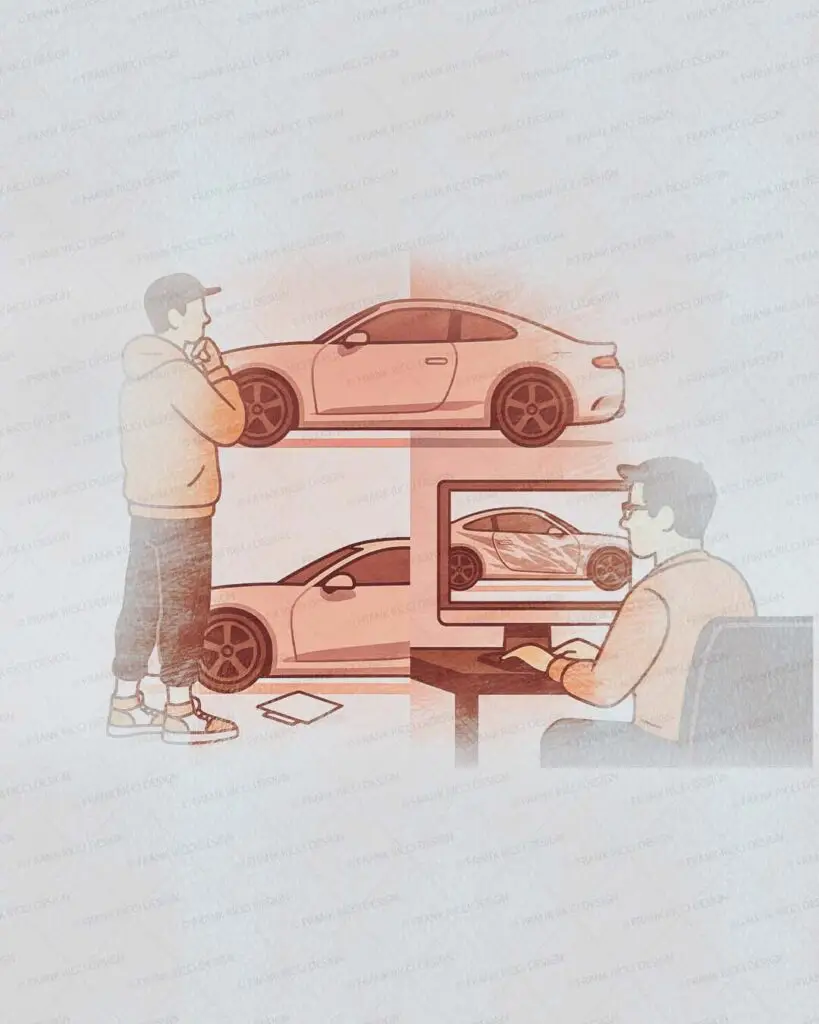Why “Too Simple” Designs Often Disappoint

There’s a phrase designers hear all the time: “I want something simple.” At first glance, it sounds reasonable. Who wouldn’t want something clean, effective, and elegant
But behind that word – “simple” – often lie misunderstandings, fears, and, in some cases, a lack of direction. This article explores what simplicity really means in design, and why, if not done with purpose, it risks being forgettable.
Simple Doesn’t Mean Shallow
A minimalist design can be elegant, sophisticated, and powerful—but only when it’s the result of conscious choices. Trouble arises when simplicity becomes a shortcut or an excuse to avoid making decisions.
When everything is stripped away without knowing what should remain. True minimalism is designed with tension, rhythm, and proportion. It’s not about leaving blank spaces or throwing in two random lines. Even a thin line can have character – if it has a reason to exist.
The Trap of Indecision
Many clients avoid standing out. They’re afraid to be bold, to make the wrong move, to be judged. So they choose the safest path—the one that blends in. But neutrality doesn’t build identity.
A design meant to please everyone usually pleases no one. That’s why, when someone asks for “something simple,” a designer’s first job isn’t to sketch – it’s to understand: simple for what? For whom? What’s behind that request?
Understated, Not Weak
A sober design doesn’t mean a weak design. There are wraps with limited color palettes, clean compositions, and minimal graphics that still communicate strength, elegance, and balance. The key is in the details. The visual weight. The conscious use of space. A subtle graphic accent, a lightly textured background, or a thoughtfully chosen font can elevate an entire project.
Take this example: a tone-on-tone wrap using subtle shifts in material and shade might stand out more than one overloaded with flashy effects. But it takes care – and a strong visual culture – to pull it off.
The Designer’s Role: Guide, Not Follower
A good designer doesn’t just follow instructions – they listen, interpret, and translate. When a client says “something simple,” the designer’s role is to help uncover what they truly want. Simplifying doesn’t mean cutting – it means selecting.
A skilled designer simplifies after exploration, not before. And above all, they’re willing to push a client beyond their comfort zone if simplicity is masking fear rather than expressing vision.
Conclusion
There’s nothing wrong with essential design. But every graphic choice should come from intention, not hesitation. True simplicity is hard to achieve because it demands mastery, clarity, and courage. A restrained design, when well executed, can be more impactful than a loud one – but only if it’s crafted to be so.
If you want a design that speaks for you, here’s the one piece of advice: don’t be afraid to express yourself. Even if it’s with just a few lines—as long as they’re truly yours.
7. Choosing the Right Style
Different owners and brands require different graphic languages. Understanding their background, goals, and values is essential to propose a style that fits. There is no one-size-fits-all in wrap design. The goal is always the same: to create something memorable, coherent, and true to the person or company behind the vehicle.
Whether you’re into racing aesthetics, brand representation, or full-blown creative expression, there’s a graphic style out there that can speak for you. The challenge is choosing the one that tells your story best.
Want to know more about how a graphic becomes a wrap? Listen to our podcast Under the Wrap Design, where we dive deep into the creative process, challenges, and real-world decisions behind each project.
Ready to bring your wrap project to life?
Want to explore How to Choose the Right Wrap Design for Your Vehicle? Click here ⧉
